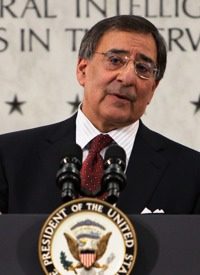
On April 20, 2001, the War on Drugs claimed the lives of an American missionary to Peru and her baby daughter when Peruvian jets, working with the CIA, gunned down the airplane carrying them because it was suspected of transporting illegal drugs.
On November 1, 2010 — nine and a half years later — “the CIA revealed … that 16 retired and current officers were given administrative punishments” in 2009 as a result of the incident, according to the Associated Press. Most of those punishments, said Rep. Pete Hoekstra (R-Mich.), “amount[ed] to nothing more than a slap on the wrist,” though he added that “it’s probably all [CIA Director Leon] Panetta could do. It’s awfully hard to hold people accountable eight years later.”
For civilians, of course, there is no statute of limitations on murder. For government officials, however, participation in a program that results in the homicide of two innocent people — and probably more, given that 15 civilian planes were shot down during the program’s existence — can be more or less forgiven after just a few years have passed. And people wonder why Americans don’t trust their government!
The background: From 1995 to 2001 the CIA, in conjunction with the Peruvian military, conducted the Airbridge Denial Program (ABDP), described by the AP as “a counternarcotics program ‘designed to interrupt the transport of coca paste by civil aircraft from Peru to Colombia,’ according to [a] now-unclassified 2008 CIA inspector general report.” The program was authorized by President Bill Clinton.
A CIA surveillance plane misidentified the plane carrying the Muskegon, Michigan missionary family — Jim Bowers, then 37; his wife, Veronica, then 35; their son, Cory, then 8; and their daughter, Charity, then 7 months — as a potential drug-smuggling aircraft and conveyed this information to the Peruvian air force, which proceeded to shoot down the plane with little to no warning. Veronica and Charity were killed by a bullet; Jim and Cory and the wounded pilot survived a crash landing on the Amazon River.
The Inspector General’s report on the program (excerpts here) indicates that “within hours, CIA officers began to characterize the shootdown as a one-time mistake in an otherwise well-run program. In fact, this was not the case.” The report elaborates:
The routine disregard of the required intercept procedures in the ABDP led to the rapid shooting down of target aircraft without adequate safeguards to protect against the loss of innocent life. Key Peruvian and American participants in the program told [the Office of Inspector General] that, in many cases, performing the required procedures would have taken time and might have resulted in the escape of the target aircraft. In addition, because the required procedures to establish contact with a target aircraft were difficult to conduct, it was easier to shoot the aircraft down than to force it down. The result was that, in many cases, suspect aircraft were shot down within two to three minutes of being sighted by the Peruvian fighter — without being properly identified, without being given the required warnings to land, and without being given time to respond to such warnings as were given to land. [Emphasis in original.]
Furthermore, the CIA withheld information about the program from Congress, the National Security Council, and the Department of Justice, including the results of its own investigations into the program “that documented sustained and significant violations of required intercept procedures dating back to the first shootdown,” according to the report. “Seeking to avoid both criminal charges against Agency officers and civil liability,” it continues, “[the Office of General Counsel] advised Agency managers to avoid written products lest they be subject to legal scrutiny.” In other words, the CIA knew of the crime and covered it up.
When the coverup was discovered, the agency meted out extremely mild punishments to those personnel involved in the program and would have kept both the coverup and the disciplinary actions, such as they were, a secret from Americans, including the Bowers family, had not Hoekstra’s district included Muskegon. As the senior Republican member of the House Intelligence Committee, Hoekstra was in a position to press for declassification of the Inspector General’s report on ABDP. He finally succeeded in attaching a measure requiring such declassification to the 2010 Intelligence Authorization Act.
The jig, therefore, is up. In prosecuting the unconstitutional War on Drugs — in a foreign country to boot — agents of the U.S. government became, at the very least, accessories to murder. The CIA tried to cover up the crime but was eventually forced to slap the agents on the wrist and remind them, with a wink and a nod, never to be naughty again — or at least to do a better job of covering up their misdeeds in the future.
Even if the Bowerses’ plane had been carrying drugs, that would hardly have justified the assassination of its occupants; nor would intercepting or shooting down the plane have done the least little bit to reduce the availability of illegal drugs in the United States or anywhere else. Drug prohibition raises the price of the prohibited substances, luring more traffickers and dealers into the market, while doing little to dampen demand.
The War on Drugs has been a miserable failure, and real justice should be served to those in both the American and Peruvian governments who perpetrated the murder of Veronica and Charity Bowers.
Photo of Leon Panetta: AP Images



